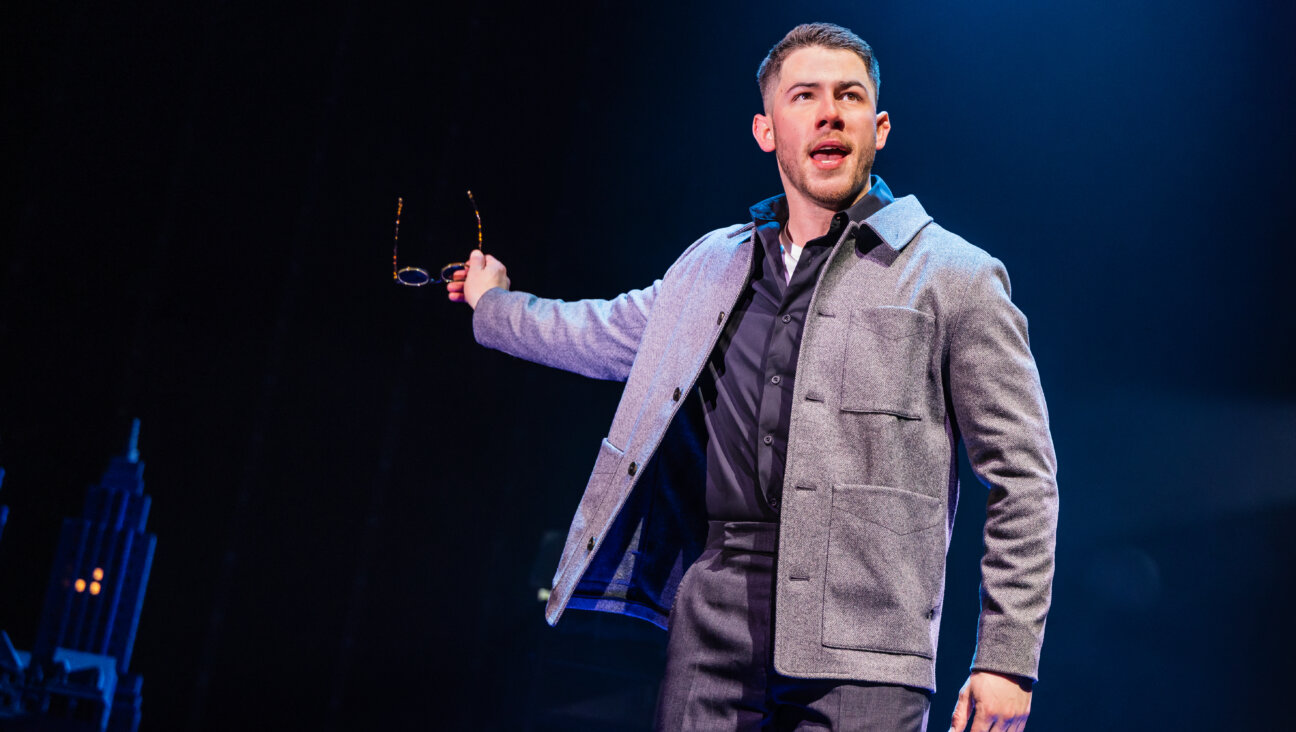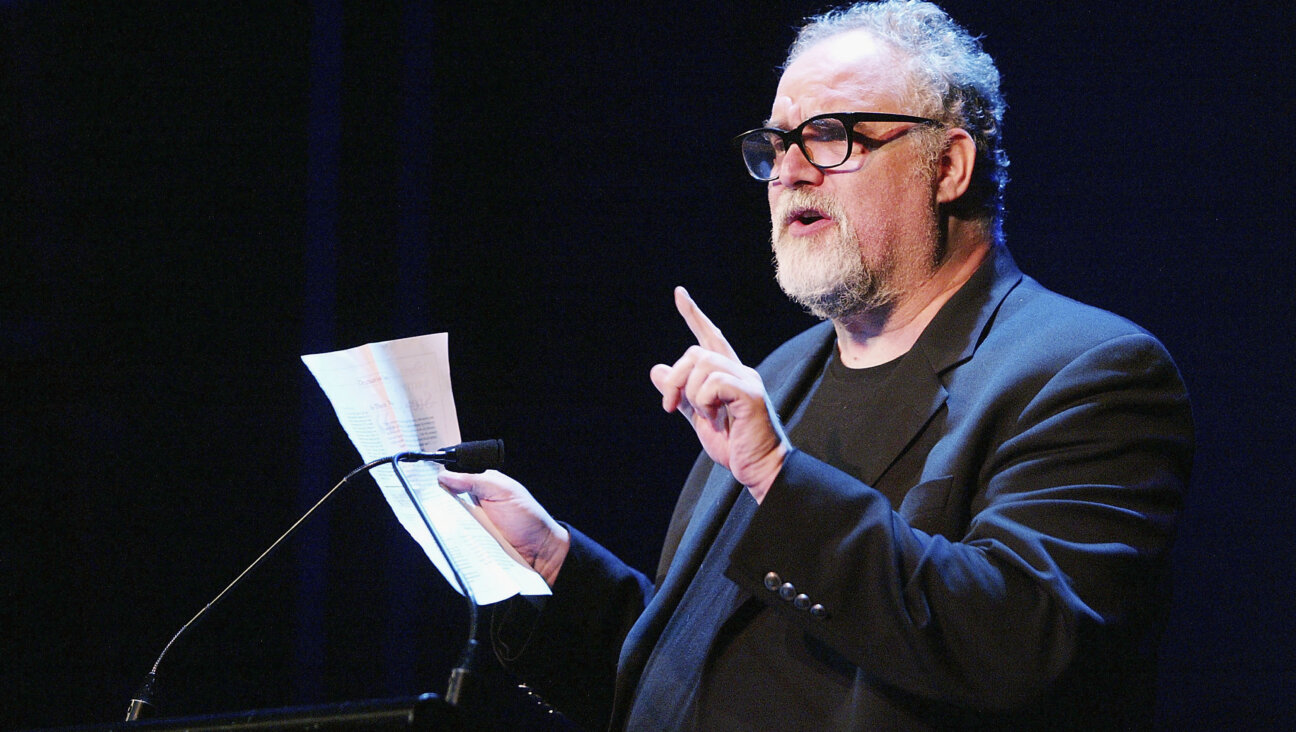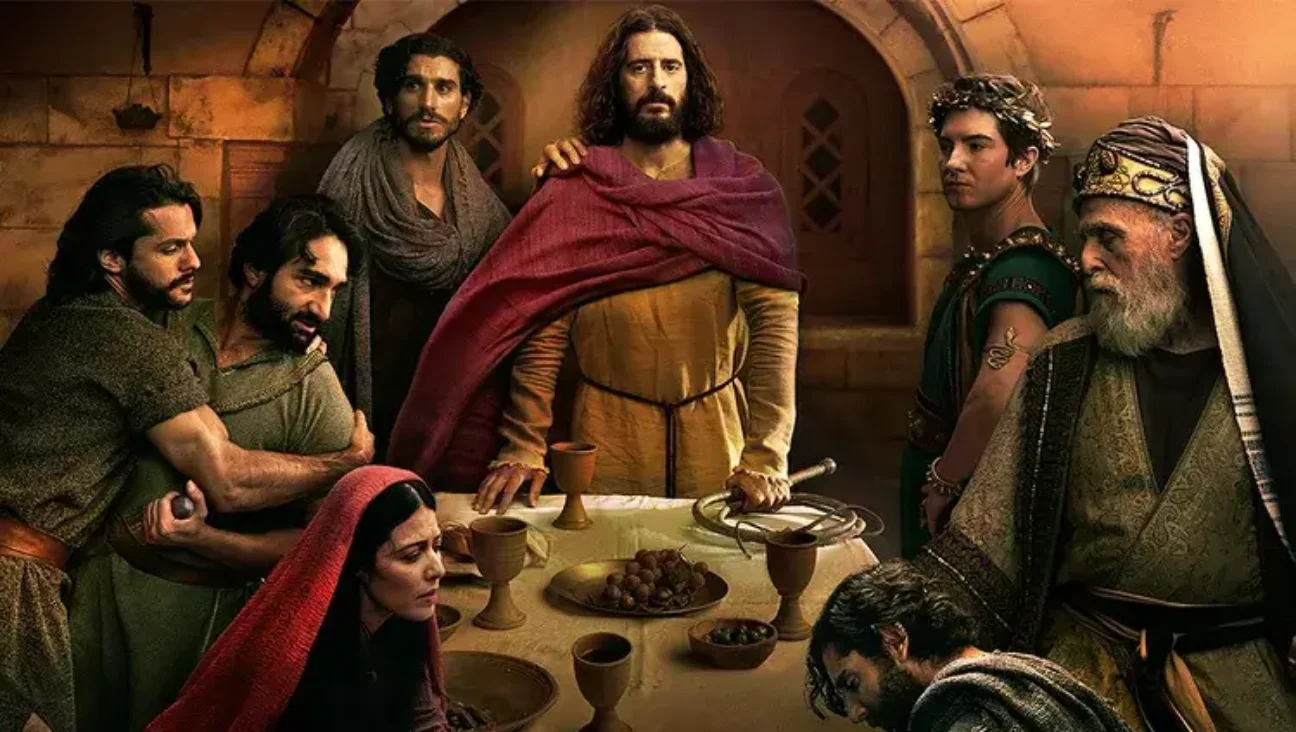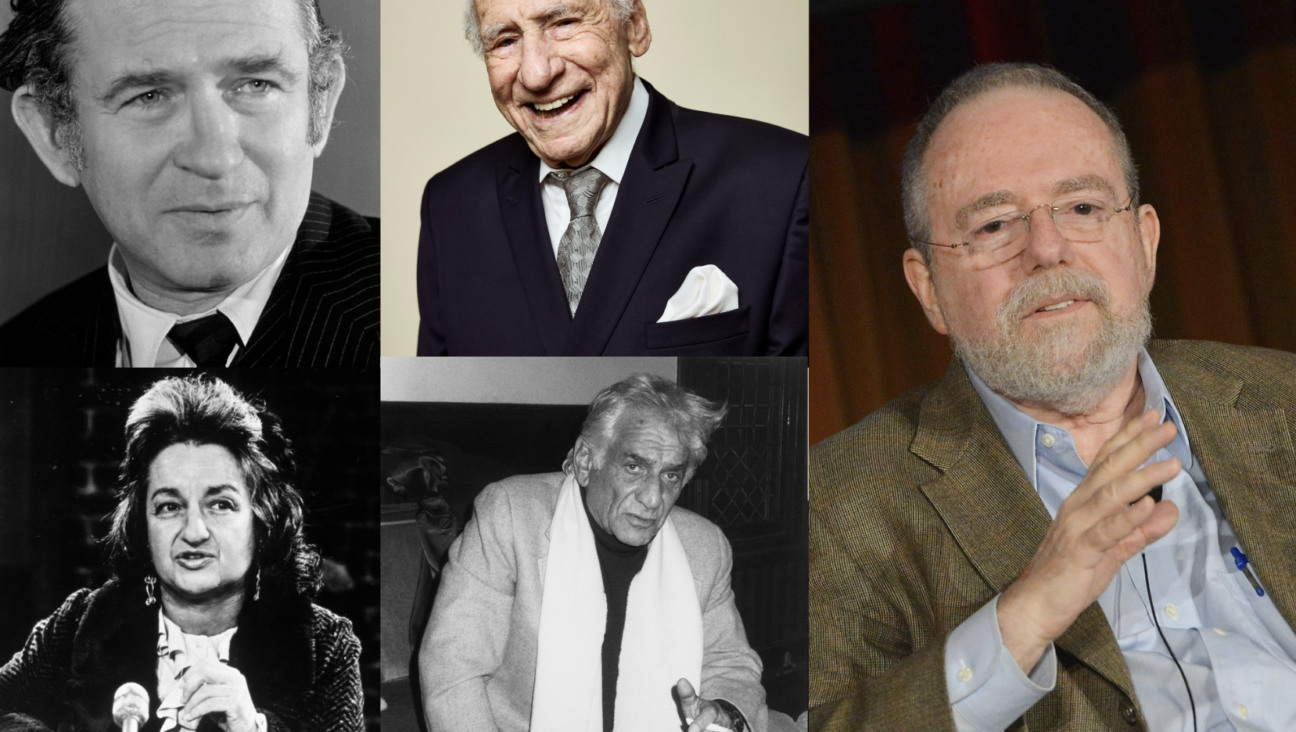Why Straight People Go to Gay Synagogues

An EZ Heeb To Listen To: Harvey Katz, aka Athens Boys Choir, is a self-proclaimed force in the spoken-word/queer/pop culture/homo hop movement. Image by ATHENS BOYS CHOIR

Mazel Tov!: Rabbi Lisa Edwards, right, and her wife, Tracy Moore, at their civil marriage in 2008 at Beth Chayim Chadashim in Los Angeles. Image by KENNA LOVE
In the next few weeks, gay and lesbian synagogues and Jewish organizations will be marching in New York, San Francisco and other cities around the country as part of gay pride parades. But many of the people marching won’t be gay themselves: More and more “gay” or GLBT (gay, lesbian, bisexual and transgender) synagogues have significant percentages of “straight allies” among their membership — in some cases, even majorities. Although there are no precise statistics quantifying this trend, it is unmistakable to anyone who visits one of these congregations, and, in an era of shrinking synagogue affiliation, prompts the question of why these institutions are growing among a population they do not even try to serve. Maybe all of us have something to learn here.
I’ve visited many of these communities in my job as a GLBT religious activist, and I’ve spoken to many of the straight-identified people who take active roles, including leadership roles, within them. My reflections on this trend are anecdotal, but I’ve seen at least three major factors in play, all of which have something useful to teach the wider community.
First, because of their community bonds and shared histories of exclusion, GLBT synagogues are often warmer and more welcoming than your average synagogue in the suburbs. These are communities made up of people who have felt, at times, actively excluded from the Jewish world, perhaps as all Jews used to feel when they were excluded from the mainstream of America. GLBT people have experienced rejection, and so GLBT synagogues work hard to make up for it. As a result, having spent time in dozens of synagogues as a teacher or scholar in residence, I can report that gay synagogues are among the most proactive in terms of inclusion — both on
the formal, structural level (committees, policies, language, accessibility) and the tachlis, practical level (saying hello to new people on Friday night).
What we have recently learned, thanks to a study commissioned by Jewish Mosaic: The National Center for Sexual & Gender Diversity, is that inclusion is a value that transcends subject matter. It was fascinating to listen to panelists discuss the study last April at the JCC in Manhattan, because the GLBT experience was almost identical to the multi-faith experience, and quite similar to what folks from other marginalized groups (for example, Jews of color) have reported for years. Whether it’s gays or multi-faith families or multiracial families or Jews from different economic backgrounds, inclusion is inclusion is inclusion. Synagogues that get it, get it — and those that don’t, don’t.
What the study also found is that policies alone don’t do it: An “open door policy” will not be enough when people are used to having doors slammed in their faces. To be truly inclusive requires proactive steps, like providing visibility for marginalized groups (committees, special programs), explicitly welcoming them in synagogue publications and Web sites, and providing sensitivity training for staff and congregants. For example, please don’t ask African Americans, “So, are you really Jewish?” Yes, this actually happens.
Gay synagogues have been at the forefront of all of this. And now, rather like Toyota reaping the benefits of its hybrid car technology, they’ve created a valuable commodity. The fact is, everyone likes to feel included, not just minorities. Especially outside New York, less-affiliated Jews have felt excluded for many, many reasons — not knowing Hebrew, not feeling religious enough — and what they find at most gay synagogues is a community that welcomes them warmly and effectively, with fewer judgments, raised eyebrows or grumbles about political correctness.
A second reason that gay synagogues are attracting so many straight members is that they are voluntary communities. Their members are people who have every reason to leave the Jewish world and never come back. They — we — have been scorned, vilified, marginalized, reduced to sexual beings, and analogized to perverts and deviants and worse. And that’s just by our rabbis. Even today, there are foundations and federations to which my GLBT not-for-profit organization is discreetly advised not to apply (rather like Jews were advised not to apply to certain country clubs). Yet despite all this, you can walk into a gay synagogue and find dozens, or hundreds, of people filling the pews and singing at the top of their lungs.
This is inspiring stuff, and if you haven’t seen it, I suggest you check it out for yourself. Straight people have told me that they feel the most joy of Judaism in gay synagogues, precisely because the joy is hard earned. These are people who really, really want to be there — and that is immediately noticeable, regardless of one’s sexuality or gender.
Third, straight people join gay synagogues because there’s a refreshing irony to GLBT religious expression. Yes, we understand that for most of Jewish history, Leviticus was read as anti-gay, and that to many people, “gay (religious) Jew” is an oxymoron. But we’re doing it anyway. This means that most gay synagogues approach Jewish ritual and text with a little more critical distance — even a sense of humor. This is deeply relaxing.
Sure, there are plenty of pitched battles at GLBT ritual committees, and plenty of Orthodox GLBT Jews who are righteously uptight about legal minutiae. This comes with the territory. But in general, my straight friends and I have found that queer Judaism is, by nature, just a little more self-aware than the norm. In every gay synagogue I’ve been to, there’s an understanding that Jewish tradition is not just available off the shelf, but must be reinvented, re-appropriated and renewed.
Obviously, these values are not limited to GLBT communities. Nowadays, everyone’s trying to “reinvent tradition,” from Jewish Renewal to Modern Orthodoxy. Notwithstanding this rhetoric, however, countless Jewish communities still nourish remnants of a much older model — the one that says it’s our way or the highway. It’s outdated, it’s alienating… and it’s alive and well in many congregations, across the denominational spectrum. Yet such a fundamentalist attitude would be ludicrous in a community creating new ritual to celebrate gender transition, or new liturgy for becoming an adoptive co-parent. And as with inclusion and inspiration, this healthy sense of self-awareness is attractive to Jews regardless of sexual orientation or gender identity.
It’s not that gay synagogues are somehow more enlightened about inclusion, inspiration, irony and innovation than straight ones are; it’s that they have had no choice but to develop them. By necessity, they’ve nurtured values and practices that are now hot commodities in the Jewish community at large. Unintentionally, they have become laboratories of the Jewish future.
Today, gay synagogues are at a crossroads. Many are becoming irrelevant, as mainstream synagogues learn how to include GLBT people, and their gifts, more effectively. Many others have become victims of their own success and have lost their distinctive gay identities as more and more straight people have joined.
Yet now is also a time of flowering, and of harvest. The two largest GLBT synagogues in America, New York’s Congregation Beth Simchat Torah and San Francisco’s Congregation Sha’ar Zahav, each have recently published gorgeous new siddurim, each of which is a font of innovative liturgy and ritual (not to mention a sociology thesis in waiting). The leaders of these institutions have become influential political activists, particularly in the area of same-sex marriage. And growing gay synagogues around the country are experiencing the same growing pains as ordinary synagogues: breakaway minyans, capital campaigns, you name it.

An EZ Heeb To Listen To: Harvey Katz, aka Athens Boys Choir, is a self-proclaimed force in the spoken-word/queer/pop culture/homo hop movement. Image by ATHENS BOYS CHOIR
But I want to end this column far from any sanctuary, in a warehouse space in the Williamsburg section of Brooklyn. I was there a few weeks ago to see Athens Boys Choir, aka Harvey Katz, a transgender Jewish hip-hop artist who was debuting his new video, “EZ Heeb.” Katz was great: hilarious, irreverent and talented. And what I suddenly realized was that all of the same factors I’ve just described about gay synagogues — inclusivity, inspiration, innovation, irony — were in sharp relief at the show, as well.
The crowd was not your usual pack of yuppie Jews. It was (dare I say it?) a rainbow of gender expression and levels of Jewish affiliation, but — or maybe as a result — it was a warm and friendly audience. Katz had every reason to be bitter, but his songs celebrated his Jewishness: He claimed it, he owned it, he flaunted it. And yet he never seemed to fall into it; there was always some camp sensibility in play, from the video footage of his bat mitzvah party to a transgender man “talkin’ bout my bris/before the first kiss.” No fake authenticity here, thanks. Katz was an outsider and insider at once, and as such was an ideal emissary of Jewish culture and identity. Which, of course, he never set out to be.
Gay synagogues weren’t founded to attract straight congregants with an inclusive, voluntary and healthily ironic approach to Jewish life. But they’ve done it. Maybe others could as well.
The Forward is free to read, but it isn’t free to produce

I hope you appreciated this article. Before you go, I’d like to ask you to please support the Forward.
At a time when other newsrooms are closing or cutting back, the Forward has removed its paywall and invested additional resources to report on the ground from Israel and around the U.S. on the impact of the war, rising antisemitism and polarized discourse.
Readers like you make it all possible. We’ve started our Passover Fundraising Drive, and we need 1,800 readers like you to step up to support the Forward by April 21. Members of the Forward board are even matching the first 1,000 gifts, up to $70,000.
This is a great time to support independent Jewish journalism, because every dollar goes twice as far.
— Rachel Fishman Feddersen, Publisher and CEO
2X match on all Passover gifts!
Most Popular
- 1

Opinion Trump’s Israel tariffs are a BDS dream come true — can Netanyahu make him rethink them?
- 2
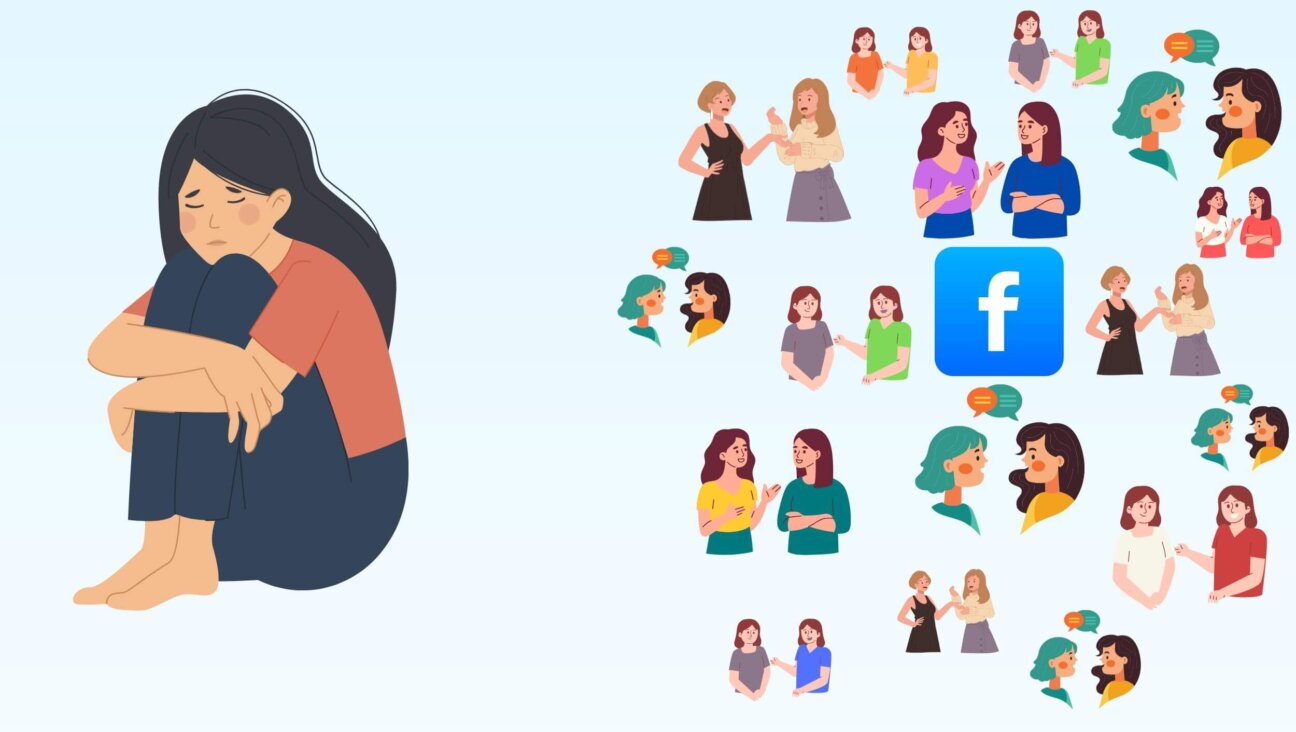
Opinion My Jewish moms group ousted me because I work for J Street. Is this what communal life has come to?
- 3
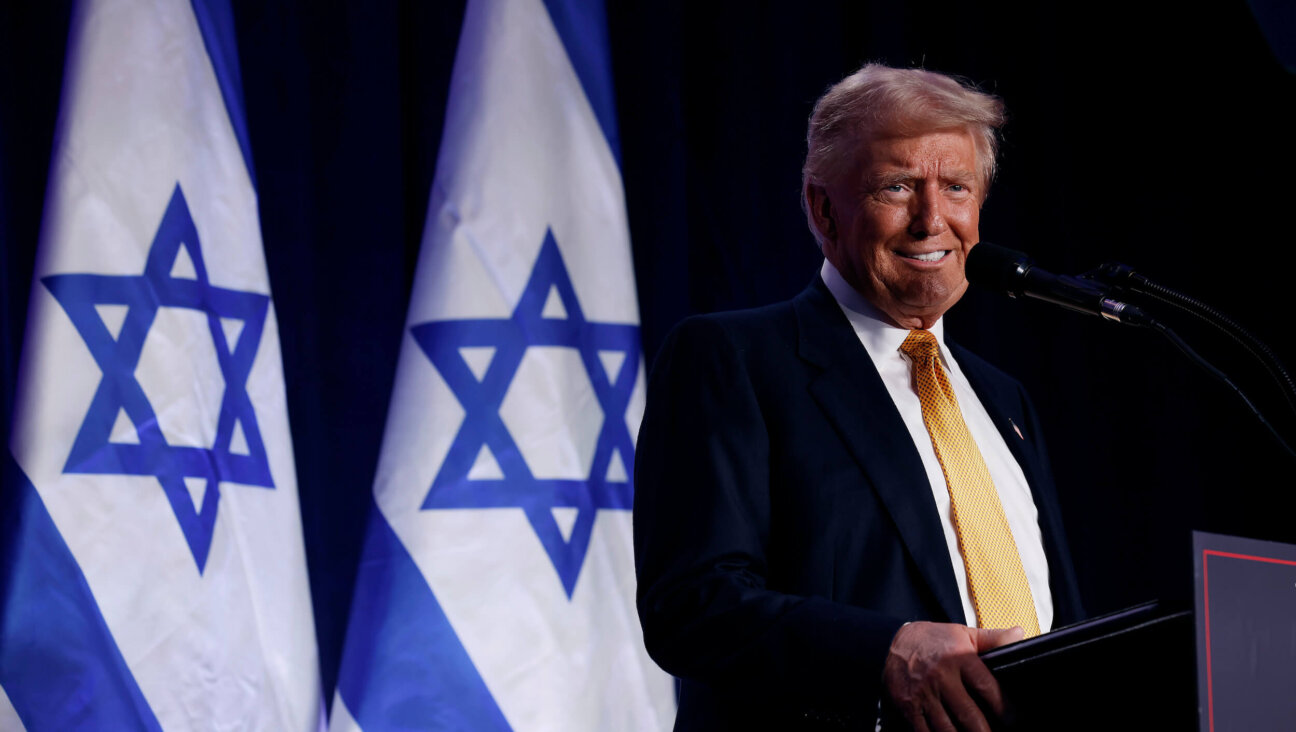
Opinion I co-wrote Biden’s antisemitism strategy. Trump is making the threat worse
- 4

Film & TV How Marlene Dietrich saved me — or maybe my twin sister — and helped inspire me to become a lifelong activist
In Case You Missed It
-
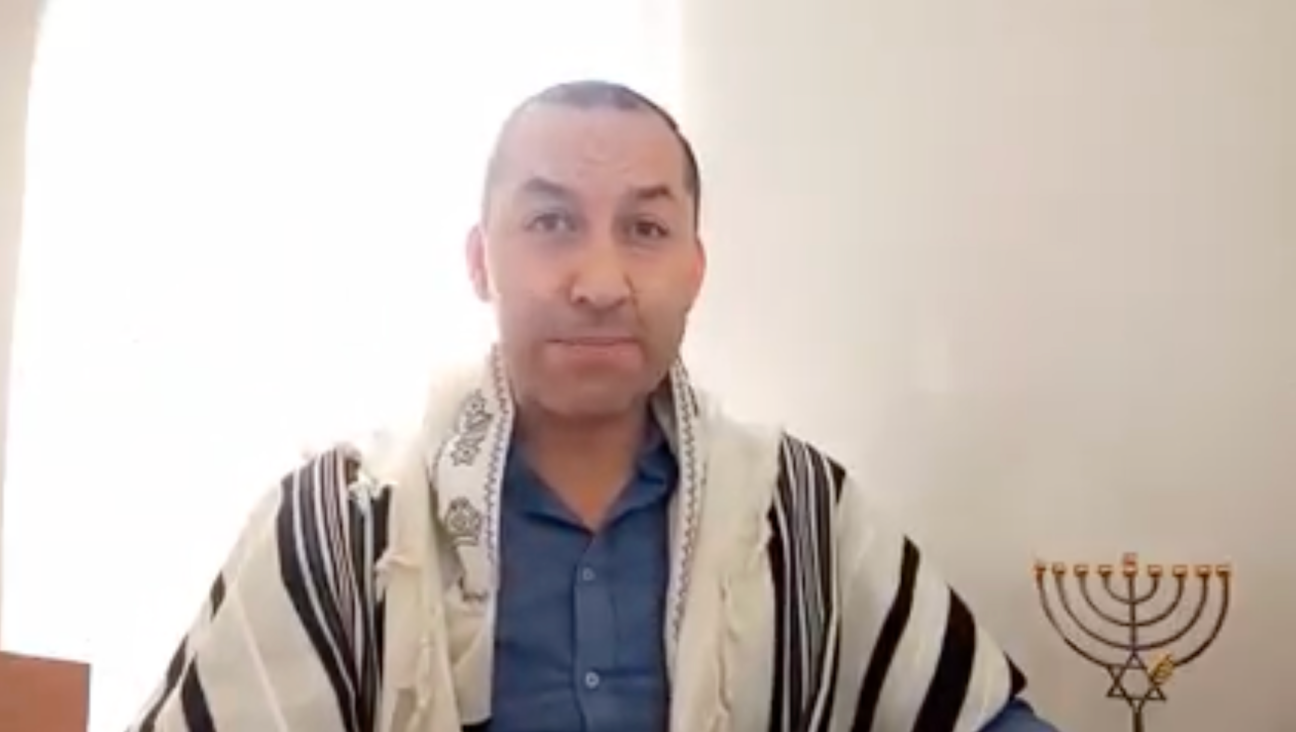
Fast Forward Colombia appoints allegedly fake anti-Zionist rabbi as director of religious affairs
-
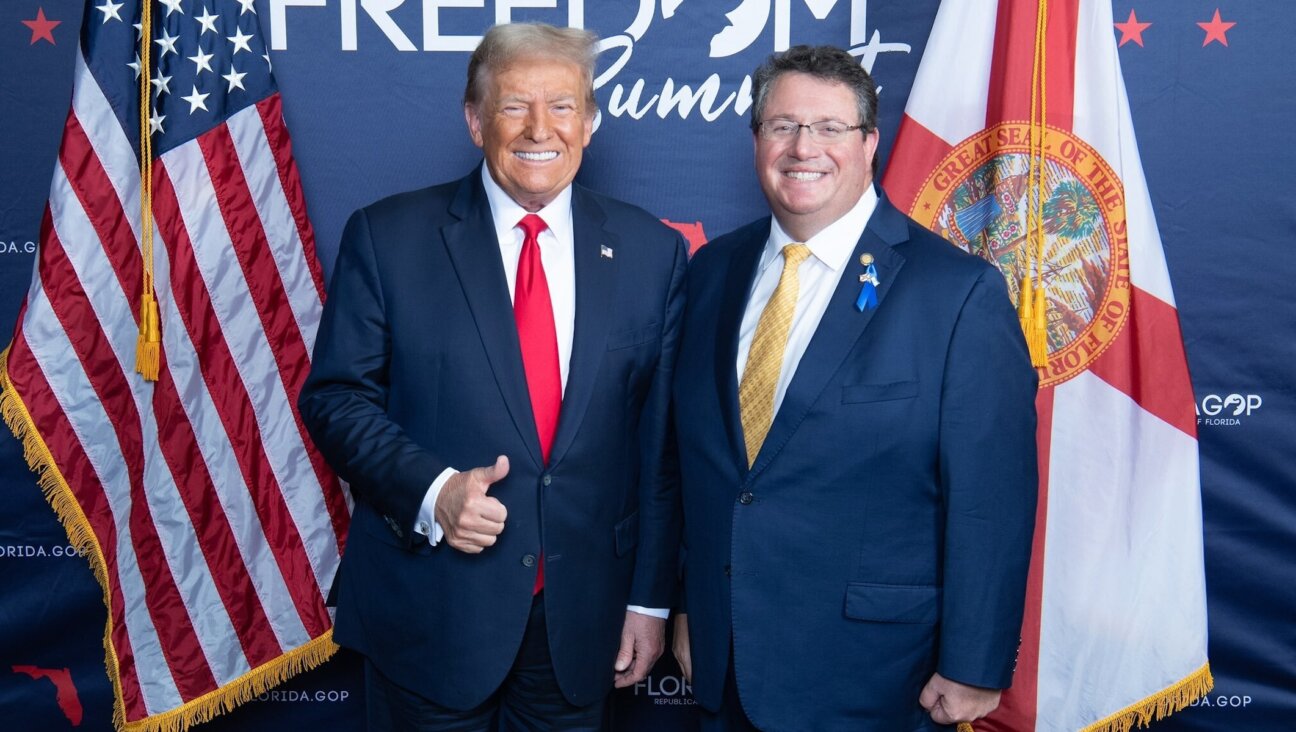
Fast Forward GOP Rep. Randy Fine, the newest Jewish congressman, calls Rashida Tlaib a ‘terrorist’
-
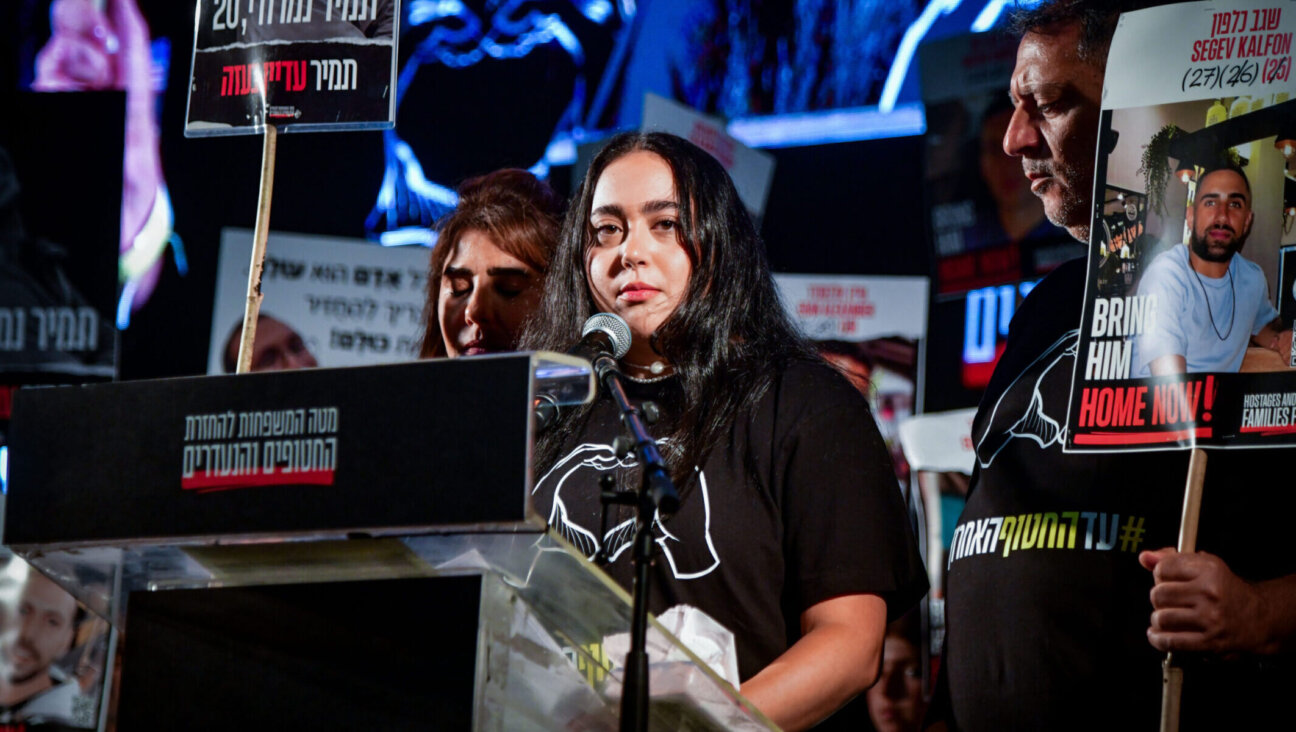
Fast Forward Freed hostage Liri Albag responds to backlash over Netanyahu criticism: ‘I fear what we have become’
-

Fast Forward France will move to recognize a Palestinian state this year, Macron says
-
Shop the Forward Store
100% of profits support our journalism
Republish This Story
Please read before republishing
We’re happy to make this story available to republish for free, unless it originated with JTA, Haaretz or another publication (as indicated on the article) and as long as you follow our guidelines.
You must comply with the following:
- Credit the Forward
- Retain our pixel
- Preserve our canonical link in Google search
- Add a noindex tag in Google search
See our full guidelines for more information, and this guide for detail about canonical URLs.
To republish, copy the HTML by clicking on the yellow button to the right; it includes our tracking pixel, all paragraph styles and hyperlinks, the author byline and credit to the Forward. It does not include images; to avoid copyright violations, you must add them manually, following our guidelines. Please email us at [email protected], subject line “republish,” with any questions or to let us know what stories you’re picking up.








